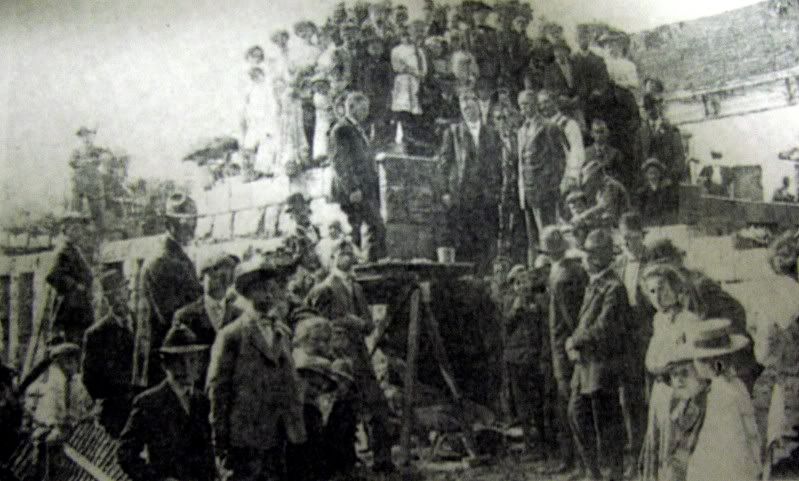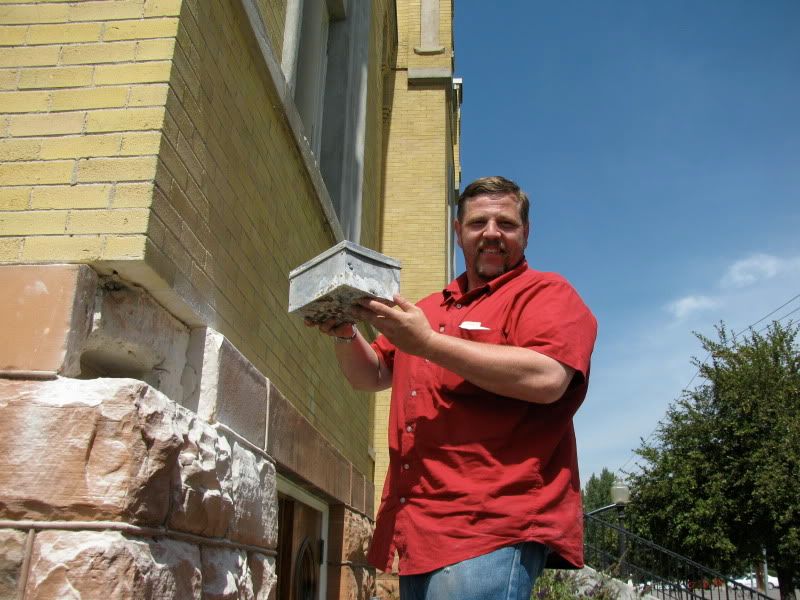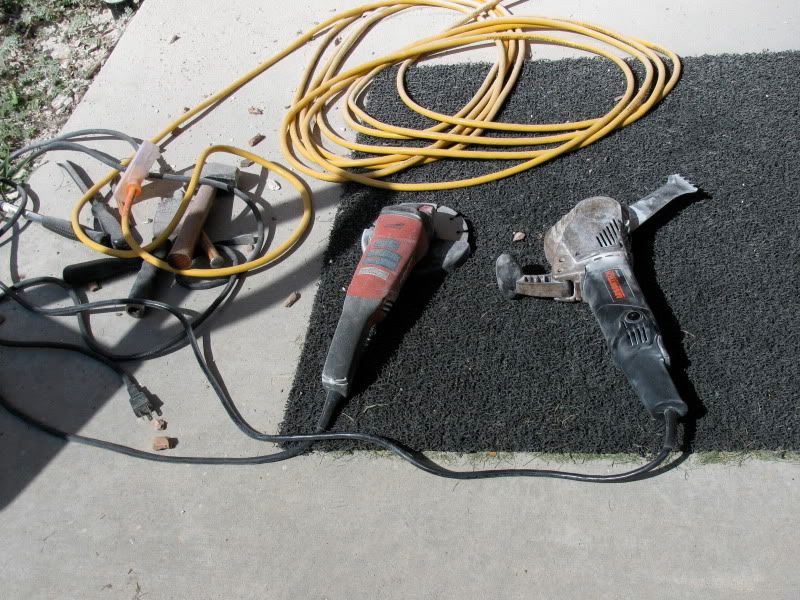 After the turn of the twentieth century but before the Great War, in an era of prosperity and peace, members of the Salt Lake City Tenth Ward built a new chapel on the corner of 8th East and 4th South to accommodate their growing membership. Designed by the Ashton Brothers architectural firm, it would be a stately brick edifice with crenellated towers, gothic windows and stained glass – a beautiful landmark for the city.
After the turn of the twentieth century but before the Great War, in an era of prosperity and peace, members of the Salt Lake City Tenth Ward built a new chapel on the corner of 8th East and 4th South to accommodate their growing membership. Designed by the Ashton Brothers architectural firm, it would be a stately brick edifice with crenellated towers, gothic windows and stained glass – a beautiful landmark for the city.
One hundred summers ago, ward members laid the foundation for their new chapel. By September the sandstone walls stood about eight feet high and the cornerstone was prepared for its prominent setting in the southeast corner. It was a simple L-shaped stone with only “Erected 1909” inscribed to mark it. Bishop Joseph Christensen presided at the ceremony and lowered the stone into place. It was the 5th of September, now almost exactly a century ago.
Laying the Tenth Ward cornerstone, September 5, 1909
The story might well end there with a reflection on the intervening century and an invitation to attend the Tenth Ward centennial celebration. But there is more to tell.
There is a time capsule.
Someone in 1909 had the presence of mind to include historical items in the cornerstone. The Salt Lake Herald reported that, “the standard works of the Church and some records, documents, and relics connected with the early history of the ward” were placed in the cornerstone! As a historian, my heart skipped a beat when I read that.
Just what did “records, documents and relics” include? Are they still intact? Do we know exactly which stone is the cornerstone? Could we really find the right stone, cut it out of the building, and retrieve the relics? Three newspapers covered the event but only the Herald mentioned the “time capsule” – could those artifacts really be fiction? No, Bishop Joseph Christensen’s 1909 diary confirmed the account in the Herald !
When I approached Bishop Nicholas Berger, the Tenth Ward’s present bishop, with this idea he was interested but cautious. The Church Historical Department was also interested but cautious, even skeptical. Many cornerstone openings in the past, including the Nauvoo House and the Salt Lake Temple, had yielded only a “mush” of water-damaged documents. Our cornerstone is sandstone and has had a hundred years to soak up water. In addition to that, in 1927 a fire gutted the chapel and made the possibility of water damage even more certain.
No one wanted to spend the time and effort and resources for a lump paper pulp. But neither did anyone want to disregard this potential treasure. The only way to know for sure was to get someone with the skills and right equipment to carefully extract the stone. But who, and which stone should we tell him to go after?
John Lambert is the founder/president of Abstract Masonry Restoration. An experienced craftsman, he specializes in national and state historical register buildings. He is one of the top in his field and has done projects for the Church before as well as around the country. He lives here in Salt Lake. He was contacted and offered to donate his time for the project.
Meanwhile, by a stroke of good fortune I had found a grainy copy of a photograph (posted above) which showed the original cornerstone ceremony. This helped John verify the stone we all thought was the cornerstone: the one inscribed 1909.
 On August 28, 2009, at about 10 a.m., with a few people watching, John began chiseling and cutting away the mortar which held the stone. After about three hours he was ready to pull the stone. We called Bishop Berger, who rushed over from work. Up on the ladder John wrestled the stone and got the first glimpse behind the stone in a hundred years.
On August 28, 2009, at about 10 a.m., with a few people watching, John began chiseling and cutting away the mortar which held the stone. After about three hours he was ready to pull the stone. We called Bishop Berger, who rushed over from work. Up on the ladder John wrestled the stone and got the first glimpse behind the stone in a hundred years.
 “I can see a box!” he said. We all felt a surge of excitement. Scott Christensen, representing the Historical Department, said it was the significant moment of the day: A box meant the old records would be protected and were probably intact.
“I can see a box!” he said. We all felt a surge of excitement. Scott Christensen, representing the Historical Department, said it was the significant moment of the day: A box meant the old records would be protected and were probably intact.
.
 An hour later the box was out. It was about half the size of a shoe box, made of some kind of tin or lead-zinc.
An hour later the box was out. It was about half the size of a shoe box, made of some kind of tin or lead-zinc.
 We all took turns posing with the box for the cameras and holding it gingerly like a Christmas present. Although the box lid was loose, no one peeked inside – the bishop wanted the whole ward to share in the fun. However, there were a couple of small holes left by the chisels … and papers were visible. The papers looked like they were in excellent condition. The bishop took the box to the bank for safekeeping.
We all took turns posing with the box for the cameras and holding it gingerly like a Christmas present. Although the box lid was loose, no one peeked inside – the bishop wanted the whole ward to share in the fun. However, there were a couple of small holes left by the chisels … and papers were visible. The papers looked like they were in excellent condition. The bishop took the box to the bank for safekeeping.
 After we helped John clean up, the only thing left to do was celebrate at Chuck-a-Rama.
After we helped John clean up, the only thing left to do was celebrate at Chuck-a-Rama.
We will open the box 6:30 p.m. on Saturday, September 5th – but let’s have some fun. Would anyone care to speculate on the contents of the box?
.
.


.

Continue reading at the original source →



